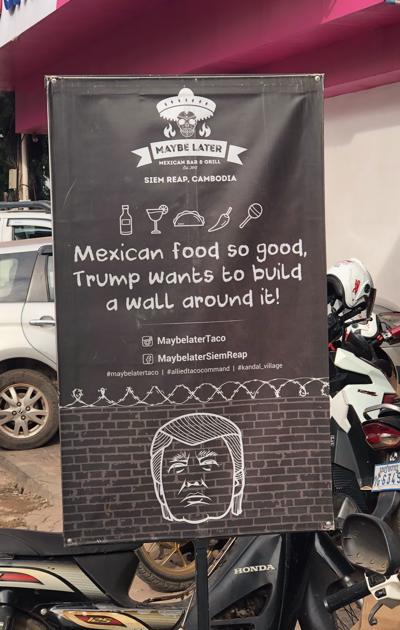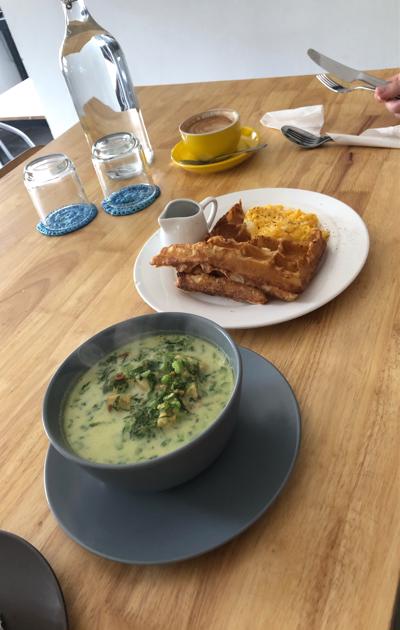My diary
Cambodia has experienced an unthinkably challenging history. In 1975 the Khmer Rouge came into power and completely obliterated life as it was known to Cambodia. The ruling party, inspired by the ideas of agrarian communal living, murdered and enslaved the people of Cambodia in one of the worst genocides in the history of Southeast Asia.
The Khmer Rouge abolished any sort of money, personal property, and religion. Anyone thought to be an intellectual was rounded up and killed. Speaking other languages, wearing glasses, having an education, were all enough to get you killed. They set out land mines in fields, some of which are still uncovered and detonate accidentally today.
Two million of the eight million people died during those four years. Those that survived were enslaved, forced to work in the fields for 12-14 hours a day in sweltering heat and little access to basic resources, such as food and proper medical care. Many were tortured in makeshift prisons. The horrors the Cambodian people have faced are completely unimaginable.
It wasn’t until 1979 the Vietnamese forces invaded and helped overthrow the Khmer Rouge. To this day, some of the generals and party leaders are still being tried for their crimes. It’s hard to believe something like this could happen in the modern day, practically in our lifetime and certainly that of our parents.
Because of this recent history, Cambodia is still rebounding. It’s feels almost like a country starting over. While poverty is widely apparent, many new buildings are being constructed, infrastructure is being erected and growth appears to be booming. And the people seem genuinely happy. There is no doubt this period has left major scars, not just physically, as many have been left blind or maimed, but emotionally. People lost their parents, grandparents, friends and neighbors. Even children and young people that didn’t live through it, understand from their parents the horrors of that time.
Despite this, the Cambodians are extremely pleasant and happy people. They are jokesters, quick to laugh (both with you and at you) and enjoying being social, even with tourists. On every corner you’ll find a tuk tuk driver hoping to give you a ride. When AJ and I rented mountain bikes for our trek, a group of them started teasing us with lines like, “What, are you climbing mountains or something?” And “You know, we can drive you. We will see you on a tuk tuk tomorrow”. And when we got back from our 27 mile ride, they all clapped for us. It was pretty hilarious.
In Siem Reap at least, there was a lot of international food options. Traditional Khmer food of course, but also Italian, Mexican, Japanese. It reminded me of the options we’d find at home. Also, of course, many of the restaurants had jokes on the signs. One of the taco shops had a sign out front that said, “Mexican food so good, Trump wants to build a wall around it!” The Cambodians get it. That being said, the best food was the traditional Khmer food, especially the amok.
Amok is a fish dish, cooked in a coconut milk spiced sauce with different veggies in a banana leaf. I’m pretty sure we ordered it 5 times, sometimes with chicken instead of fish, and it was always delicious. I’m definitely going to learn how to make it at home and I hope it turns out even half as good.
In general, AJ and I took it relatively easy in Cambodia, besides the hardcore biking of course. As we were halfway through our one month trip, it was nice to take a few days to just hang out without packing in activities every chance we got. I don’t know what I expected out of Cambodia, but I certainly liked it. If we were to come back, I’d like to see Phnom Penh, visit the killing fields, and maybe spend some time in the villages, away from all the other backpackers. It is an amazing place.
Cambodia Final Thoughts
December 20, 2019
|
Siem Reap, Cambodia
Cambodia has experienced an unthinkably challenging history. In 1975 the Khmer Rouge came into power and completely obliterated life as it was known to Cambodia. The ruling party, inspired by the ideas of agrarian communal living, murdered and enslaved the people of Cambodia in one of the worst genocides in the history of Southeast Asia.
The Khmer Rouge abolished any sort of money, personal property, and religion. Anyone thought to be an intellectual was rounded up and killed. Speaking other languages, wearing glasses, having an education, were all enough to get you killed. They set out land mines in fields, some of which are still uncovered and detonate accidentally today.
Two million of the eight million people died during those four years. Those that survived were enslaved, forced to work in the fields for 12-14 hours a day in sweltering heat and little access to basic resources, such as food and proper medical care. Many were tortured in makeshift prisons. The horrors the Cambodian people have faced are completely unimaginable.
It wasn’t until 1979 the Vietnamese forces invaded and helped overthrow the Khmer Rouge. To this day, some of the generals and party leaders are still being tried for their crimes. It’s hard to believe something like this could happen in the modern day, practically in our lifetime and certainly that of our parents.
Because of this recent history, Cambodia is still rebounding. It’s feels almost like a country starting over. While poverty is widely apparent, many new buildings are being constructed, infrastructure is being erected and growth appears to be booming. And the people seem genuinely happy. There is no doubt this period has left major scars, not just physically, as many have been left blind or maimed, but emotionally. People lost their parents, grandparents, friends and neighbors. Even children and young people that didn’t live through it, understand from their parents the horrors of that time.
Despite this, the Cambodians are extremely pleasant and happy people. They are jokesters, quick to laugh (both with you and at you) and enjoying being social, even with tourists. On every corner you’ll find a tuk tuk driver hoping to give you a ride. When AJ and I rented mountain bikes for our trek, a group of them started teasing us with lines like, “What, are you climbing mountains or something?” And “You know, we can drive you. We will see you on a tuk tuk tomorrow”. And when we got back from our 27 mile ride, they all clapped for us. It was pretty hilarious.
In Siem Reap at least, there was a lot of international food options. Traditional Khmer food of course, but also Italian, Mexican, Japanese. It reminded me of the options we’d find at home. Also, of course, many of the restaurants had jokes on the signs. One of the taco shops had a sign out front that said, “Mexican food so good, Trump wants to build a wall around it!” The Cambodians get it. That being said, the best food was the traditional Khmer food, especially the amok.
Amok is a fish dish, cooked in a coconut milk spiced sauce with different veggies in a banana leaf. I’m pretty sure we ordered it 5 times, sometimes with chicken instead of fish, and it was always delicious. I’m definitely going to learn how to make it at home and I hope it turns out even half as good.
In general, AJ and I took it relatively easy in Cambodia, besides the hardcore biking of course. As we were halfway through our one month trip, it was nice to take a few days to just hang out without packing in activities every chance we got. I don’t know what I expected out of Cambodia, but I certainly liked it. If we were to come back, I’d like to see Phnom Penh, visit the killing fields, and maybe spend some time in the villages, away from all the other backpackers. It is an amazing place.


1.
Chapter One: The Journey Begins
2.
On Arrival: Hoi An
3.
Hoi An: Day Two
4.
Hoi An: Day Three
5.
Final Day: Hoi An
6.
Train to Hanoi
7.
Hoa Lo Prison +
8.
Hanoi: Day Two
9.
Two Days in Ha Long Bay
10.
Leaving Vietnam
11.
On Arrival: Cambodia
12.
Angkor Tombs
13.
Cambodia Final Thoughts
14.
On Arrival: Chiang Mai
15.
Elephant Sanctuary
16.
Temples of Chiang Mai
Share your travel adventures like this!
Create your own travel blog in one step
Share with friends and family to follow your journey
Easy set up, no technical knowledge needed and unlimited storage!